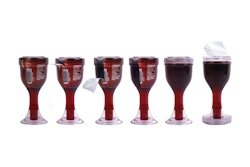There is endless media—books, articles, blog posts, social media commentary, and interviews—focused on the magic of brand storytelling. There’s no question that storytelling has power. When leveraged as a marketing tool, it elicits real engagement and emotion, which forms the connective tissue between consumers and brands.
Still, there’s often something missing, even when brands present a good story. Telling a story entails finding receptive listeners, which is important, but it also raises a tantalizing question: As engaging as a good story is, what lasting impact does it have on the consumer? Since many brands are taking this tack, how many stories really stick in a meaningful manner? The brand stories that do are clearly doing something different. But what?
Taking a page from the entertainment world
In pondering these questions, the answers seem to lie in the entertainment world. Think about Disney, Nickelodeon, Marvel, DC Comics, and Hasbro; all of them know how to build their properties’ brands with storylines that evolve, move forward, and deeply engage their audiences. They use many media platforms—traditional and digital—to accomplish this. They license their brands to create consumer products in many categories. When licensing program design is expertly developed, products and packaging are used as rich platforms through which to visually communicate and advance their stories in a tangible manner. But these brands don’t only tell stories—they invite their adherents to become co-creators of these stories.
Fans become immersed in their favorite properties, which become part of their own personal stories and their lives that they readily share with like-minded friends. Their cultural relevance and values hit a deep nerve with a swath of the population and catapult these brands to superstardom. In essence, great entertainment properties create a rich world—a separate universe—for their adherents, one that is indispensable to them and their lives.
Don’t believe it? Think about how rabid the fans of the Star Wars trilogies are. How about a short, three-year TV series from the 1960s known as Star Trek? Its power led to a new TV series, books, movies, and a myriad of consumer products. And let’s not forget about the Trekkie conventions it spawned. What does Disney Princess mean to legions of young girls? Hasbro Transformers to guys and young boys? The NFL for sports fans? These kinds of brands continue to create stories that are woven into their fans’ personal stories. They continue to deeply engage them across media platforms and with licensed products.
The CPG connection
So why can’t consumer product brands take a page from these entertainment wizards? Why can’t they create worlds of their own to attract, engage, and immerse their own fans in unique universes? Some brands do to a greater or lesser extent. Witness the absolute devotion that Nike, Dove skincare, IKEA, and Harley Davidson create in their fans. They are an indispensable part of their lifestyles because the brands continue to deliver immersive, brand-driven experiences with every consumer-facing marketing initiative, including product and package design. For packaged consumer product brands, notables like Coca-Cola, Budweiser, Mattel, Oreo, and Kellogg’s come to mind, even though they are in various stages of creating brand worlds. Hence their category dominance.
Opportunities everywhere
With the explosion of new media, smart brand owners know that the sky’s the limit to engage with their audiences. So why focus on telling consumers the facts about their products via advertising? A story is 22-times more memorable than the stating of facts, according to cognitive psychologist Jerome Bruner. And how much more memorable is a story in which consumers can immerse or see themselves as a part of the story? Drawing consumers in and making them part of an entire brand world is the ultimate goal; even staid, classic brands can reorient their marketing in this manner.
Using state-of-the-art digital technology may dazzle, but not for long, since most brands continue to jump on the newest-of-the-new bandwagon. There’s no doubt about it: Visual brand communication engages, but what if there isn’t a meaningful, shared story behind it? Inking new contracts with hot licensed properties will take a brand just so far. Again, is there anything meaningful behind it? Without an engaging story that connects on a cultural and human level, the brand is just another seller of products or services among another bunch of brands doing the same thing. Big deal.
Lego shows how it’s done
Lego quadrupled its sales over the past 10 years. The toy manufacturer was floundering in 2003 before refocusing its marketing strategy on its core brand and leveraging it to create a separate world for its fans. Successful? Over the past year, Lego posted sales of $4.6 billion, representing a 10% growth in revenue versus Mattel’s and Hasbro’s flat sales of $6.48 and $4.08 billion respectively during the same period and vaulting the brand past Hasbro to the #2 spot in the toy industry.
Lego’s licensing partnerships with the likes of Star Wars, Harry Potter, SpongeBob SquarePants, and a number of superhero brands appeal broadly to kids who are fans of these strong entertainment properties, helping to catapult the brand into their consciousness. Lego CEO Joergen Vig Knudstorp noted in a recent interview, “In 2013, we successfully developed and launched products that children put high on their wish list all over the world. …It’s a major challenge to stay top of mind for children seeking toys, and Lego competes with very strong players.”
But Lego has done more than co-branding with powerful entertainment properties. The company, much like Hasbro and Mattel, has become a media brand itself, not only a toy manufacturer. Its website has become a gathering place for fans to engage with each other, play games, and of course, shop. Lego’s online community has over 1 million members as fans are invited to immerse themselves in a world that they co-create, sharing videos of their building projects, communicating on message boards, and signing up for the free Lego Club magazine. Lego recently created My Own Lego Network, which enables kids to generate their own web pages to share their creations, and reaching out to parents to enlist their help to ensure that their children’s pages are safe and secure.
As for its toys, Lego’s creative play patterns have also helped to build the brand. As children, like adults, continue to seek freedom of expression and customized brand experiences, Lego intuitively feeds that powerful desire online and in its retail merchandising efforts. Well-developed packaging used as a rich visual canvas with selective verbal communication tells the story of each product line in an engaging manner, which is especially crucial for licensed consumer products.
Lego’s “brick-by-brick” brand strategy has paid off handsomely. Fans organize Lego events around the globe, attracting over 6.5 million people. When Lego is contacted, they happily send a company representative to deliver a keynote address along with Lego bricks for the event. That gives company managers direct contact with avid brand fans, affording them valuable insights.
The February 2014 release of The Lego Movie was a great success, with international box office sales of $463 million. The movie delighted kids around the globe, and just as importantly, it appealed to parents and grandparents. Summing it up? All of this consistent fan engagement keeps the brand top of mind and always exciting for its dedicated cadre of fans who have helped to build the world of Lego.
Does this insinuate that consumer product brands need to take a page from what Lego is doing? To a degree, yes. By thinking in terms of leveraging the right mix of media and its power to engage, using product and package design to make the story tangible, and co-creating a world with its fans, brands are making stronger relationships with them and pointing to the future. This is what brand marketing, effectively done, looks like. It is an exciting time to be a marketer and to chart a unique path for brands—to write an evolving script in conjunction with adherents who are no longer consumers but avid fans.
The sky truly is the limit for those who dare to dream big.
Ted Mininni is President of Design Force, Inc. He can be reached at 856/810-2277.


























